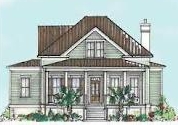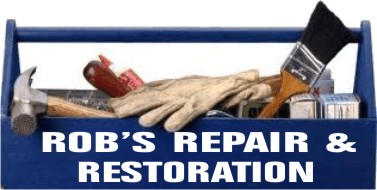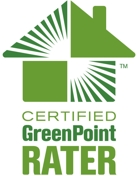CERTIFIED GREEN BUILDING PROFESSIONAL
I've taken the required courses and received training in what
many are calling 'green' or 'sustainable' building elements. I am a
Certified Green Building Professional (advanced) and a certified Green Point
Rater for new homes and a certified Green Point Adviser for existing single
family and multi-family structures.
I am not a HERS rater, qualified to do testing with a variety
of tools of the building envelope to figure it's energy efficient status,
but can analyze and advise solutions and recommend such things to be done.
When it comes to energy- and resource-efficient homes, building a new one
and upgrading an existing one are very different processes. That’s why there
are two different rating systems:
GreenPoint Rated New Home and
GreenPoint Rated Existing Home. These two systems are customized
for single family or multi-family projects.
Why is GreenPoint Rated divided into New Homes and Existing Homes?
-
Energy Performance: Older homes use more energy than new homes, so they
have different energy performance improvement targets.
-
Health and Safety: GreenPoint Rated Existing Home ensures that older homes
meet basic health and safety requirements that are automatically assumed
in new construction, such as well-installed windows and siding, no leaks
in the plumbing, and no holes in the building exterior.
-
Point Allocation: A major objective of the Existing Home rating system is
to educate and provide a pathway for making continued improvements, so it
awards points for partial improvements, like a bathroom upgrade. The New
Home system requires green building best practices throughout the entire
home.
GreenPoint Rated New Home
 This rating system is for designing
and building brand new single-family homes. It's usually used by architects, builders,
developers, and property managers who work with a third-party GreenPoint
Rater. Homebuyers or renters can differentiate between green homes and
conventional homes by looking for homes that have earned the New Home label. This rating system is for designing
and building brand new single-family homes. It's usually used by architects, builders,
developers, and property managers who work with a third-party GreenPoint
Rater. Homebuyers or renters can differentiate between green homes and
conventional homes by looking for homes that have earned the New Home label.
Some common measures include: High-efficacy lighting, EnergyStar®
appliances, FSC-Certified lumber, insulation with 75% recycled content,
water efficient fixtures, solar electric panels, solar water heaters, and
low or zero emitting interior paints, varnishes, cabinetry and carpeting.
Multi-Family New Homes: Some common measures include: Recycling construction waste, survey
and correction for building envelope, foundation, and plumbing, combustion
safety and carbon monoxide test, energy efficiency, and low-emissions
products.
GreenPoint Rated Existing Home.
 Single
Family Homes Single
Family Homes
A single family home can receive one of two labels:
- The Elements label recognizes green building best
practices for a small remodel or addition. It's a great stepping stone for
homeowners making small improvements over time. These GreenPoint Rated
homes must meet certain pre-requisite, achieve a minimum point requirement
in each of the five environmental categories, and score at least 25 total
points.
Some common measures include: Installing a built-in composting and
recycling center in the kitchen; water efficient and native landscaping;
using faucet aerators and replacing all water fixtures with
high-efficiency versions; installing an EnergyStar® bathroom fan.
- The Whole House label recognizes green building best
practices for a large renovation, gut remodel, or cumulative improvements
made over time. A home with this label has significantly better energy
efficiency and reduced environmental impact compared to homes of a similar
vintage. These GreenPoint Rated homes must meet certain prerequisites,
achieve a minimum point requirement in each of the five environmental
categories, and score at least 50 total points.
- Some common measures include: High performing heating and cooling
systems; insulating the building envelope with 30% post-consumer recycled
content insulation; low emitting interior products (including insulation and
patins); using environmentally preferable materials for interior finishes (FSC-Certified
cabinetry, recycled tile and countertop materials, reclaimed or local
products); replacing appliances with EnergyStar® versions.
|



